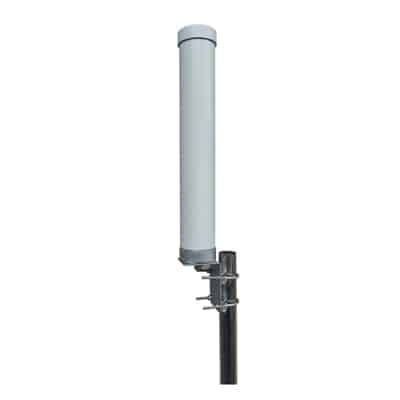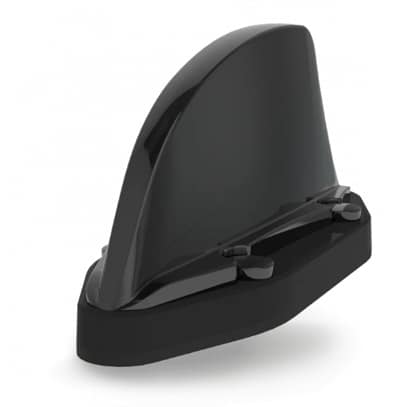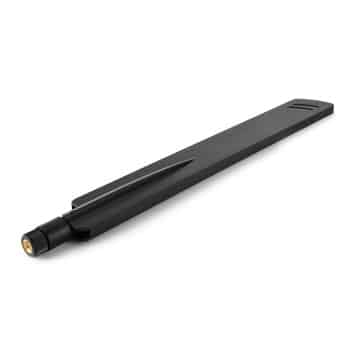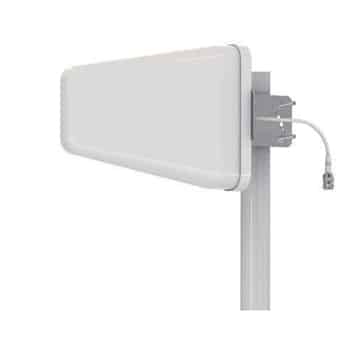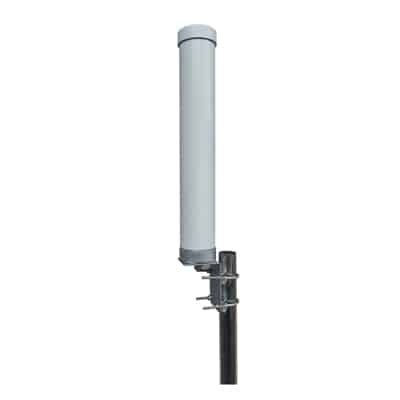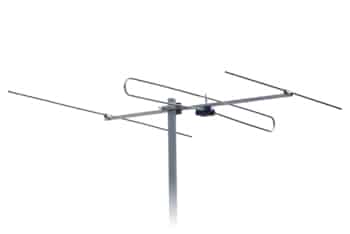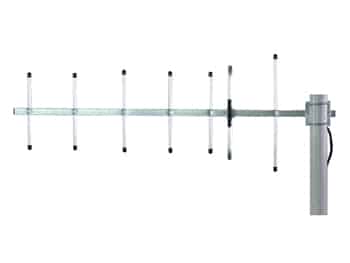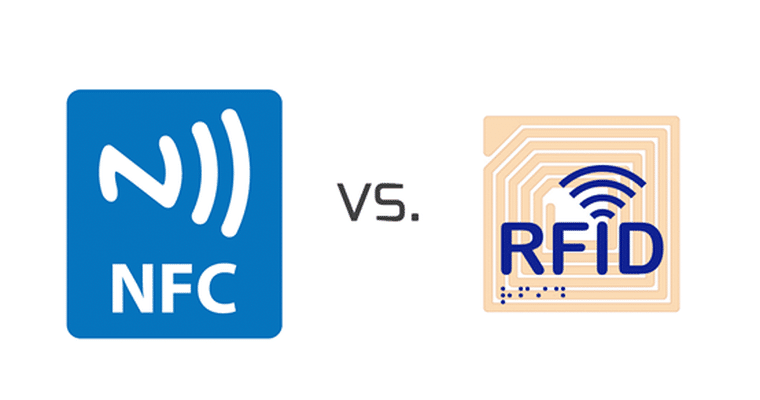
Radio Frequency Identification (RFID) and Near Field Communication are two popular short-range communication protocols widely used in Internet of Things (IoT) and Machine-to-machine (M2M) applications. Despite their similarities, there are a few differences between RFID and NFC. The differences between RFID and NFC are important in successfully implementing the best solution for your business. These differences include differences in communication range, power consumption, price, data transfer speeds, and security features in communication. These will be discussed throughout the article.
It is important to understand the differences between RFID and NFC as they are two separate technologies that are more often confused among users. It also helps to save additional costs that would arise on implementation and testing. It also increases the efficiency of the expected outcome. Therefore, it is essential to understand the difference between RFID and NFC technologies. In this article, we will first understand what each technology means and then identify the difference between RFID and NFC and their different applications.
Table of Contents
ToggleUnderstanding RFID
RFID is a technology that utilizes the electromagnetic coupling of electromagnetic waves to detect objects within a short range. An RFID system consists of three main components: an RFID tag, a reader, and an antenna. These comments combine to form a completely functional RFID system. The RFID reader is responsible for reading information stored in the RFID tag. The RFID antenna is the component responsible for transmitting and receiving radio signals.
An RFID system is triggered by the radio signals emitted from the RFID reader to the RFID tag. Then, the RFID tag will send the required information through its antenna as radio signals. Sometimes, there can be a dedicated processing unit, which would first process information in the RFID tag and then send it to the reader.
Applications of RFID technology expand from retail businesses to large-scale businesses such as supply chain management. Some RFID applications in different industries and businesses include,
- Retail business: RFID technology can be used to track the users’ preferences and carry out user payments.
- Inventory management: RFID technology can be used to track inventory and stocks in real time and store vital information such as the quantity of stock and related parameters. Also, RFID can be used for access control thus providing security features as well.
- Supply chain management: RFID technology can be used to track supply trucks and other peripherals of the supply chain in real time to carry out efficient business activities.
- Livestock monitoring: RFID technology is used for real time tracking of livestock such as cattle and lamb.
Despite a wide range of applications RFID technology has its own advantages and disadvantages. Some of the advantages include,
- RFID technology is accurate and efficient as it can store unique information in RFID tags
- RFID technology is easily scalable.
Disadvantages of RFID include,
- RFID tags and readers can be expensive
- RFID tags can be easily damaged
- RFID signals can be obstructed by metal objects
Understanding NFC
NFC is considered a subset of RFID technology where the devices with NFC capability can communicate over a short distance in the centimeters range. However, NFC devices have the added advantage of bi-directional communication between the devices.
NFC enabled devices are embedded with a small NFC chip, which will send radio signals to another NFC chip. Once a connection is established between two NFC chips, the chips can communicate with each other using the created magnetic field between them.
Some of the applications of NFC in different industries and businesses include,
- Retail and Wholesale business: NFC is used as a contactless payment method.
- Access control: NFC can be used as a technique for access control in crowd monitoring.
- Data sharing: NFC can be used for data sharing between two devices without direct contact.
- Post-Sale check-in: NFC can be used for post-sale promotions
NFC also provides several advantages such as,
- NFC chips are less vulnerable to data compromise as the data is transferred by electromagnetic induction.
- NFC chips provide a convenient contactless payment facility.
However, there are some disadvantages in using NFC as well. These include,
- NFC chips can be expensive when compared to RFID counterparts, due to additional encryption costs.
- The short range of communication is a major disadvantage of NFC technology
What can Tesswave do for you?
Tesswave provide 100+ antenna products and you can contact us for antenna customized solutions, get in touch with us today to get a Free quote.
Get an Instant Quote
Get a FREE quote and we will contact you within an hour
Key Differences between RFID and NFC
Now let us identify some of the key differences between RFID and NFC technology in several aspects. When it comes to the range of operation, NFC has a limited range than that of RFID devices. NFC range in about 0.1m and requires users’ active participation in succeeding the communication. However, RFID also has a limited range and mostly depends on the type of RFID tag and reader. RFID devices can read data from up to 10m range. However, when it comes to data transfer speed NFC is faster than RFID. The average NFC data transfer speed is about 400 kbps but usually would operate around > 100kbps, whereas RFID data transfer speed is limited to around 100kbps. However, NFC devices are not capable of reading bulks of devices at once, which is possible with RFID enabled devices.
Again, when it comes to security, NFC has an encrypted communication channel, whereas RFID has no dedicated encryption scheme to protect information. However, both NFC and RFID technologies are strongly vulnerable to physical damage.
Furthermore, when it comes to power consumption, both RFID and NFC consume little energy. However, NFC can consume slightly more power than RFID as the devices are required to be powered during communication. Finally, considering the cost and ease of implementation, NFC is easy to use and implement and is cost-effective and it can store a variety of data compared to RFID. However, when it comes to bulk reading, RFID would be a better option.
Practical Applications – Comparing RFID and NFC Use Cases
Now let us investigate some of the practical applications of both RFID and NFC technologies. We will focus on different niche use cases for each technology and briefly discuss the role of each technology in its corresponding niche.
Firstly, RFID is heavily used in supply chain and inventory management. In the supply chain management business, RFID is used to track the inventory route, location, and available stocks. It can be extended to monitor other factors such as temperature and humidity which can affect the quality of the goods.
Another niche application area of RFID is asset tracking, where RFID tags are usually mounted on the assets, and then they are tracked with information such as their location, quantity, and other key factors such as temperature.
NFC on the other hand, is specially used in contactless payments and data-sharing applications. Since NFC can handle only a single device, at once, it is suitable for handling single payments. Moreover, NFC can provide encryption to the transmitted information, hence securing the payments. Also, NFC can be used in applications, which require a triggering action and in post-sale promotions in retail businesses.
Future Trends in RFID and NFC Technologies
RFID and NFC are expected to grow widely in several aspects, especially in IoT and M2M communication applications due to their low cost and easy implementation. When it comes to future trends related to RFID, some of the new innovations include,
- Intelligent RFID tags: These tags can carry out intelligent processing tasks on the stored information.
- Low Cost of Production of RFID Systems: Different low-cost methods are researched to manufacture low-cost RFID components.
- Large Networks: RFID systems are investigated to sustain large networks.
Also, some of the future trends and innovations related to NFC include,
- Contactless payment methods: The use of NFC in contactless payment is increasing rapidly and is being used in modern smart supermarkets to enhance the user experience.
- Use of NFC in IoT: With the rapid advancement of IoT, NFC is being widely adopted in different IoT applications and in areas such as agriculture and healthcare.
Conclusion
In this article, we briefly discussed the differences and similarities between RFID and NFC. Both RFID and NFC are used for short-range communication purposes, and RFID is most suitable for bulk readings, while NFC is ideal for applications that require a level of security. Both RFID and NFC have a rapidly growing market share due to the advancement of IoT-based applications.

